Analytical notes
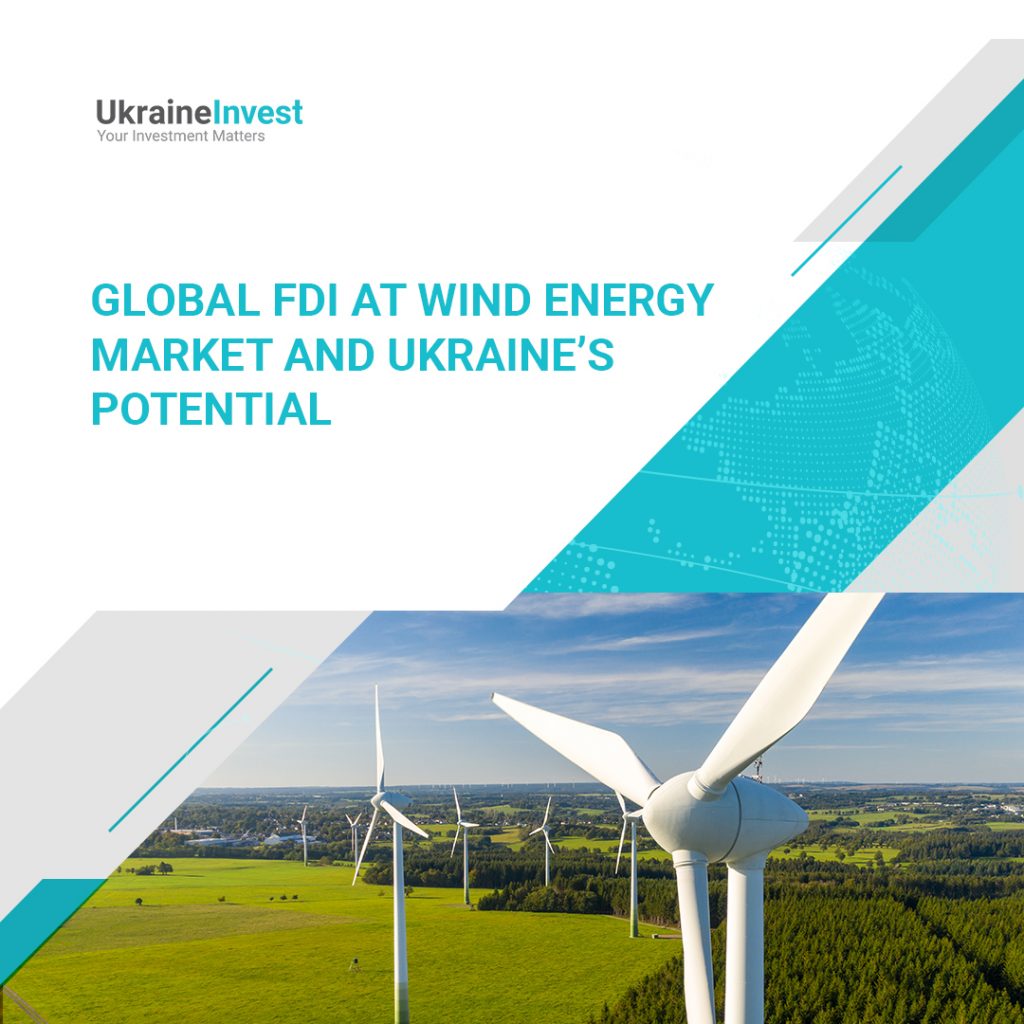
Global FDI at wind energy market and Ukraine’s potential
Global installed wind energy hit the 100GW mark already in 2008 – four years before solar did. It created hundreds of thousands of jobs along the way as the sheer scale of wind turbines, whose transport requires costly logistics solutions, has traditionally strengthened the argument for wind supply chains localization. In its 2021 annual review on renewable energy, Irena remarks that “the integration of local content and local employment in wind energy requires further efforts in contracting arrangements, technical development and cooperation, and local capacity development”.
Switch Report 2022 highlights the following FDI trends at global wind market:
– leadership of European power utilities and wind turbine suppliers;
– the rise of China, the US and Europe as the biggest wind energy geographies, with emerging markets (India, Brazil and Mexico) also achieving major progress;
– the attractiveness of the UK as the destination of choice of FDI into large-scale offshore wind projects.
Russia’s war against Ukraine further affects global food production chain
Russia’s war against Ukraine has affected food prices directly via supply disruptions and indirectly via surging fertilizer prices.
Global food supply disruptions
Russia’s invasion of Ukraine continues to send shockwaves through global markets and put increasing inflationary pressure on the entire agricultural industry. Food prices are directly affected by disrupted supply from Ukraine and import restrictions for Russian goods in many markets. According to IHS Markit, Ukraine (4%) and Russia (3%) hold key positions in global food markets and together were responsible for around 21% of global wheat exports in 2021. Other agricultural crops of Ukrainian exports affected by war include rapeseed (15%), corn (14%), barley (14%), buckwheat (5%), rye (5%), sunflower seeds (3%).
Following the inflation and food crisis, there are several discussions on how to export or move the Ukrainian grain, and other cargo. There has been a significant increase in shipments from Danube River ports in Ukraine and Romania. However, most of the shipments are done by small ships less than 10,000 dwt, therefore the total volume is too small to offset the loss of seaborne trade, at least for now. Combined capacity of dry bulk and general cargo ship departures from Ukraine has decreased by 92% from year-ago level (10 million deadweight) to below 1 million deadweight tons.
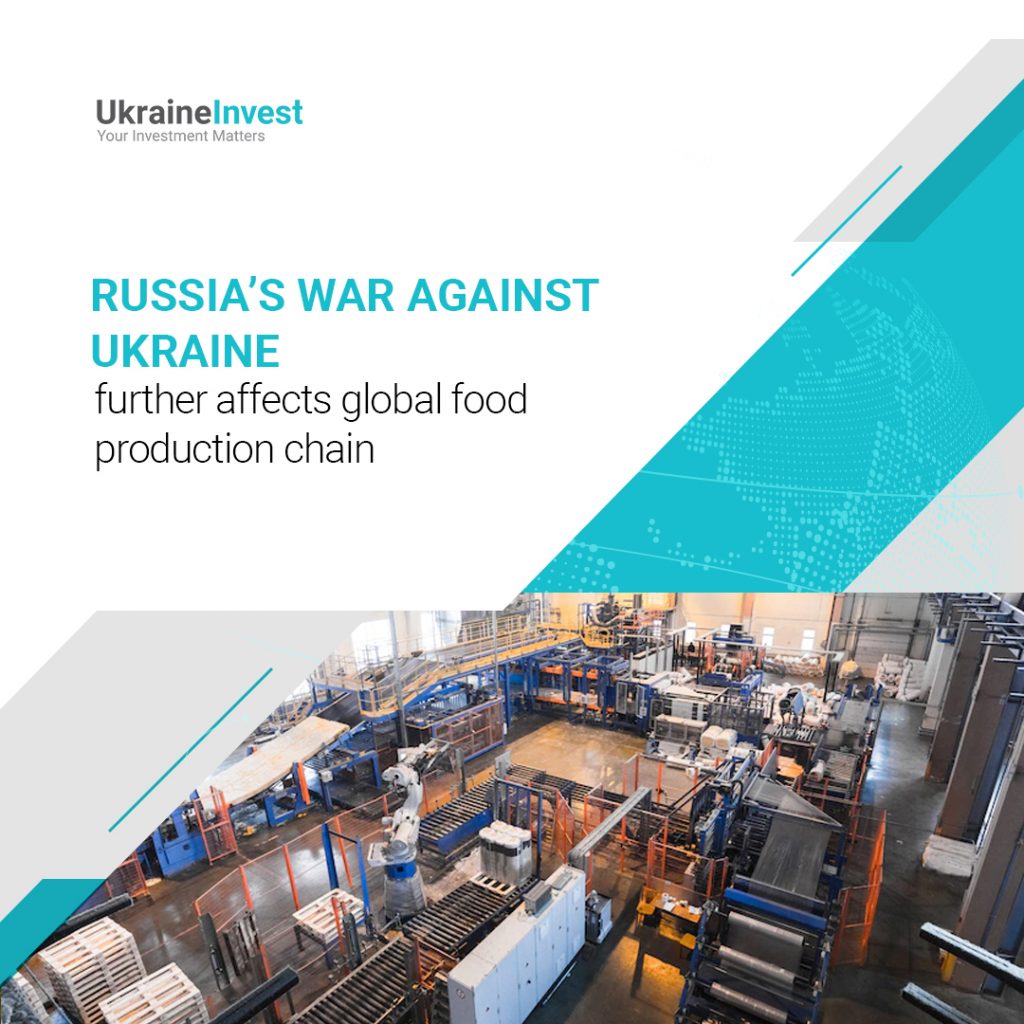
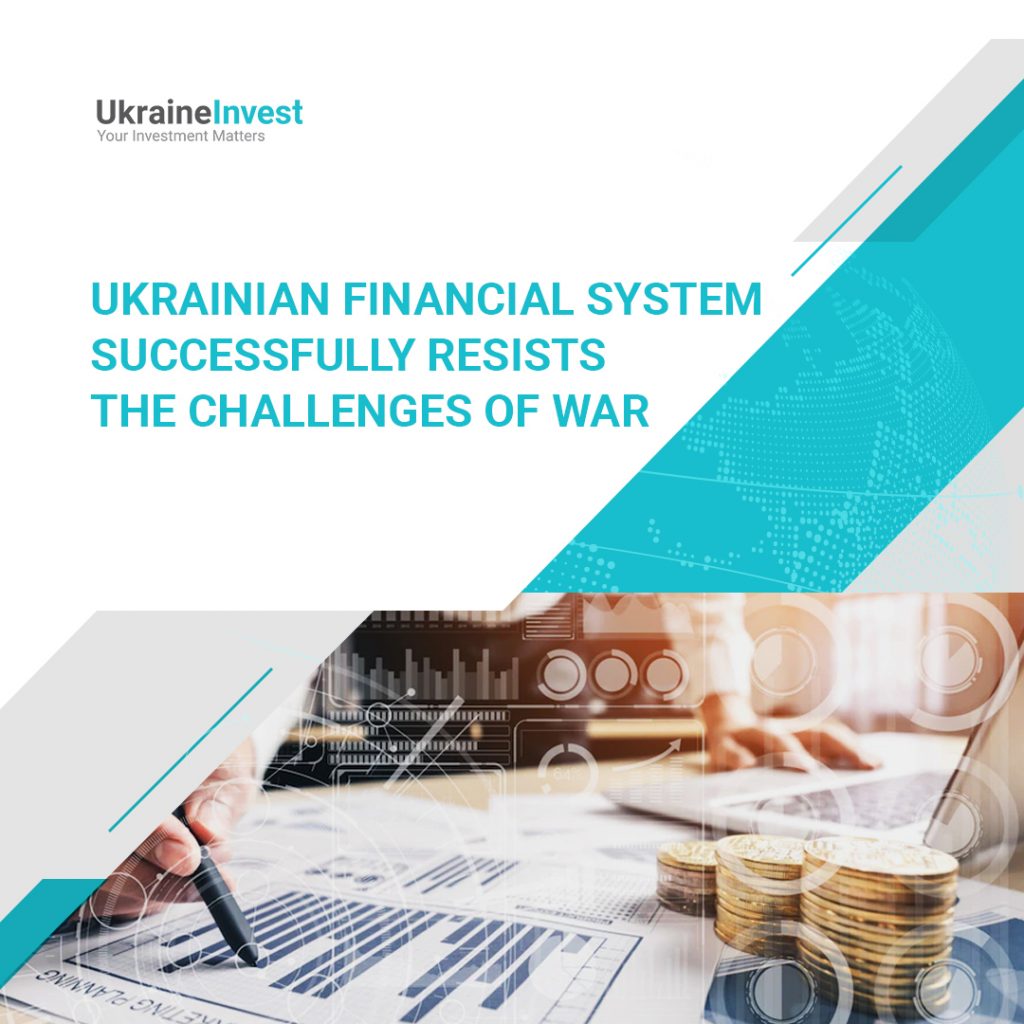
Ukrainian financial system successfully resists the challenges of war
The deep economic and financial crises caused by russia’s full-scale war against Ukraine will have significant negative and long-term consequences for the financial sector. However, according to the Financial Stability Report published by the National Bank of Ukraine (NBU) in June 2022, banks are successfully resisting the challenges of war due to significant safety margin, timely response of the NBU and the reforms undertaken.
Given the expected scale of financial risks and capital losses by banks, the NBU has temporarily switched to a policy of regulatory easing. The NBU will not take measures of influence if financial institutions violate capital adequacy requirements due to the negative consequences of the war. At the same time, the NBU requires banks and non-bank financial institutions to display their financial condition transparently and authentically. This will make it possible to establish a realistic schedule for financial sector post-war recovery.
Sustainable finance boom at capital markets, UNCTAD 2022
During the pandemic, and partly as a result of pandemic recovery plans, sustainable finance saw strong growth across equities, fixed income products and alternative assets, and in both public and private markets. According to European Commission sustainable finance is the process of taking environmental, social and governance (ESG) considerations into account when making investment decisions in the financial sector, leading to more long-term investments in sustainable economic activities and projects.
Sustainable finance market overview
In 2021, the sustainable finance market continued to grow, in terms of both the number and the value of sustainable products. UNCTAD estimates the total value of sustainable financial products at $5.2 trillion, up by 63% from 2020. However, UNCTAD analysis shows that not all of this investment is truly sustainable and that alignment with the SDGs remains limited. Sustainable investments comprise sustainable funds and sustainable bonds, including green, social and mixed-sustainability bonds.
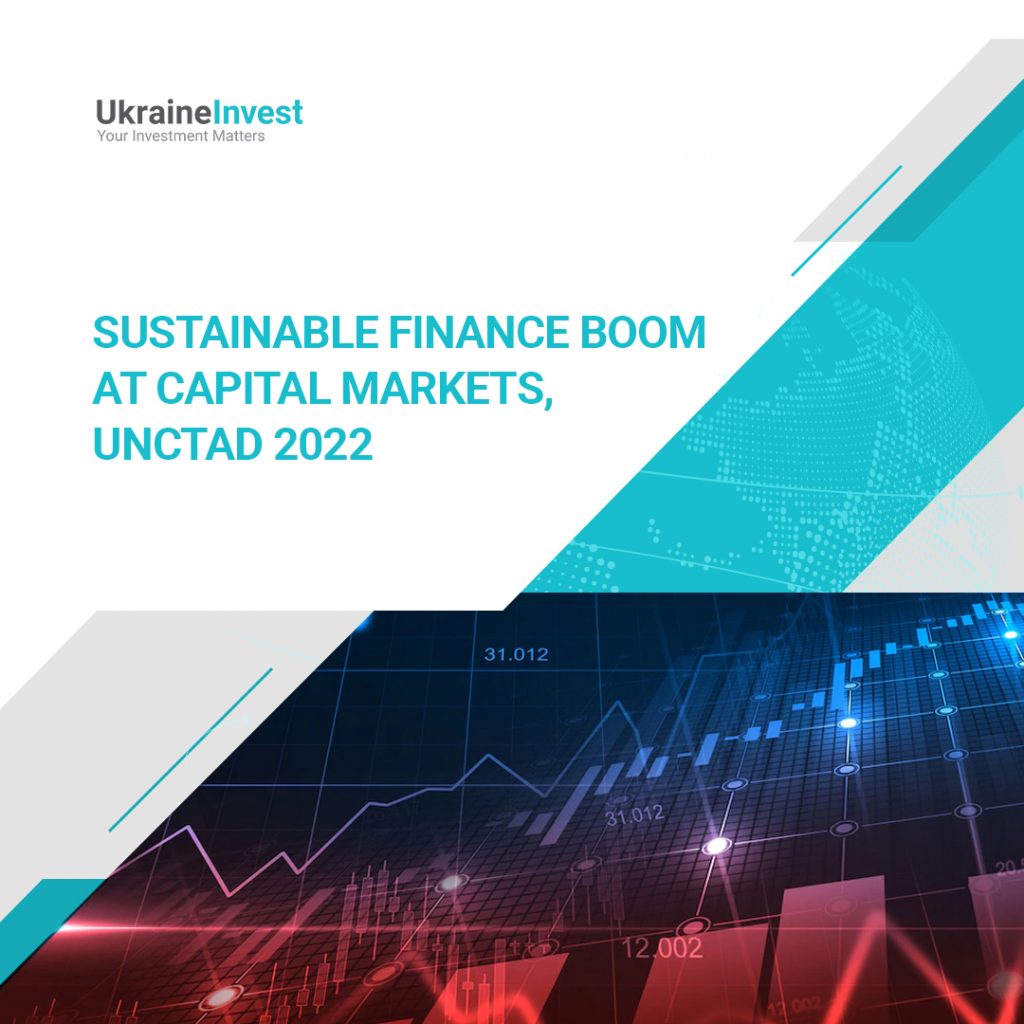
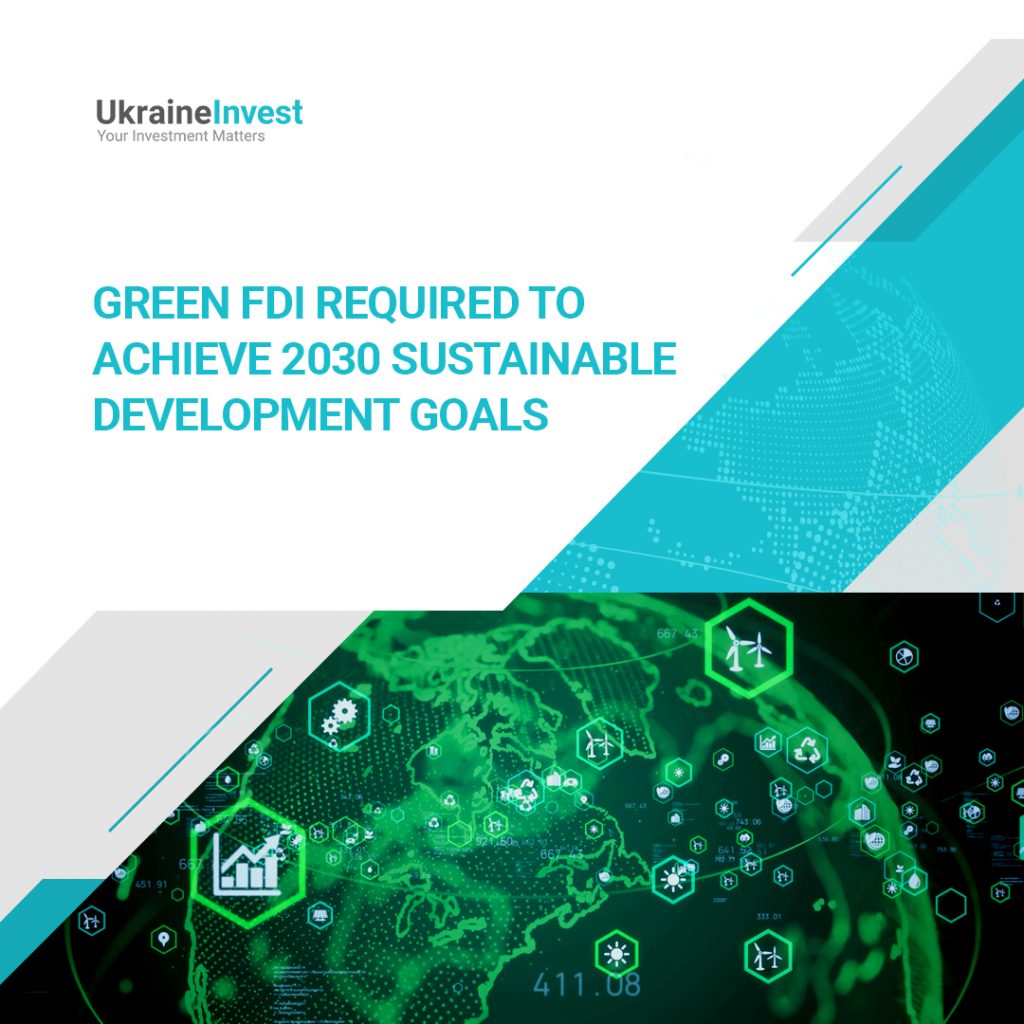
Green FDI required to achieve 2030 Sustainable Development Goals
In its earlier publications, UNCTAD proposes to follow a two-part definition of green Foreign Direct Investment (FDI): 1) FDI in production of environmental goods and services (EGS) sectors; and 2) FDI in environmental-damage mitigation processes, i.e. use of cleaner and/or more energy-efficient technologies, such as low-carbon technologies.
Green FDI has the potential to greatly advance sustainable development. It is crucial for the enhancement of growth and innovation, through the quality of jobs it creates, and the development of human capital which further raises living standards.
At the 2015 United Nations Summit, world leaders made the decision to adopt the 17 Sustainable Development Goals (SDGs) as part of the 2030 Agenda for Sustainable Development.
New opportunities for Ukrainian furniture industry
Furniture retail and trade is an important part of the global economy. The furniture industry is comprised of the production, distribution, and retail of furniture for residential and commercial use. According to Statista, the United States is the largest furniture market in the world in terms of revenues ($240 billion), as followed by China ($82 billion), Germany ($56 billion), France ($27 billion) and the UK ($23 billion). As of 2022, russia accounted for $17 billion revenues and Ukraine – for nearly $1 billion.
Statista reports that the global market value of furniture was estimated to be $510 billion dollars in 2020, and was expected to increase every year to reach a forecasted value of approximately $651 billion by 2027. However, this trend may reverse due to fallout of russia’s invasion to Ukraine.

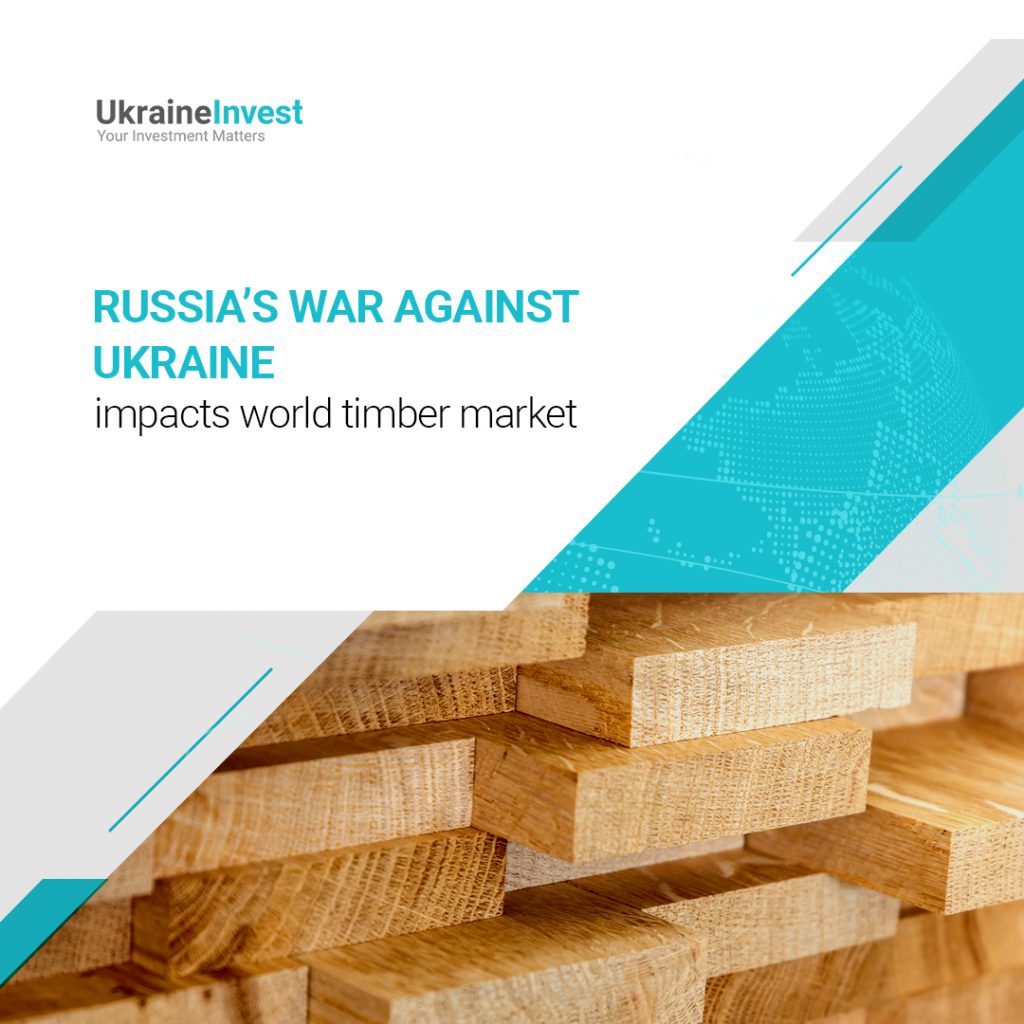
Russia’s war against Ukraine impacts world timber market
Russia’s war against Ukraine has caused serious disruption to the global timber trade with export reduction from Russia, Belarus, and Ukraine and increased concerns over loosening some environmental protections to make up the current shortfall.
International sanctions (5th package) imposed by the EU and UK have curbed supplies from Russia, the world’s largest exporter of softwood timber, and Belarus, while the war has severely hampered production in Ukraine. According to Financial Times, the three countries accounted for nearly 25% of worldwide lumber trade with $17 billion value in 2021. Collectively they cover nearly 10% of European softwood demand. Ukraine alone exported wood and wood products at more than $2 billion value in 2021. According to Ukrainian Customs Service the positive balance from timber trade reached $1.6 billion, which is 43% more than in 2020.
The Federation of Wooden Pallet & Packaging Manufacturers (FEFPEB) reports that Ukraine exports almost 3 million cubic metres of sawn softwood annually while the EU alone imported nearly 8 million cubic metres of softwood from Russia and Belarus in 2021.
EU candidacy for Ukraine is a positive sign for international investors
On June 23, 2022, at the EU Summit, 27 member states voted to give Ukraine and Moldova candidate status for European Union membership. This positive decision comes as a symbol that Europe stands with Ukraine and a new impetus for Ukraine’s victory in the war.
According to European Commission, as regards the political criteria, Ukraine has reached the stability of institutions guaranteeing democracy, the rule of law, human rights and respect for and protection of minorities. Concerning the economic criteria, Ukraine has demonstrated a noteworthy resilience with macroeconomic and financial stability ensured also after Russia’s invasion in February 2022. This reflects not only a very strong political determination, but also relatively well-functioning institutions.
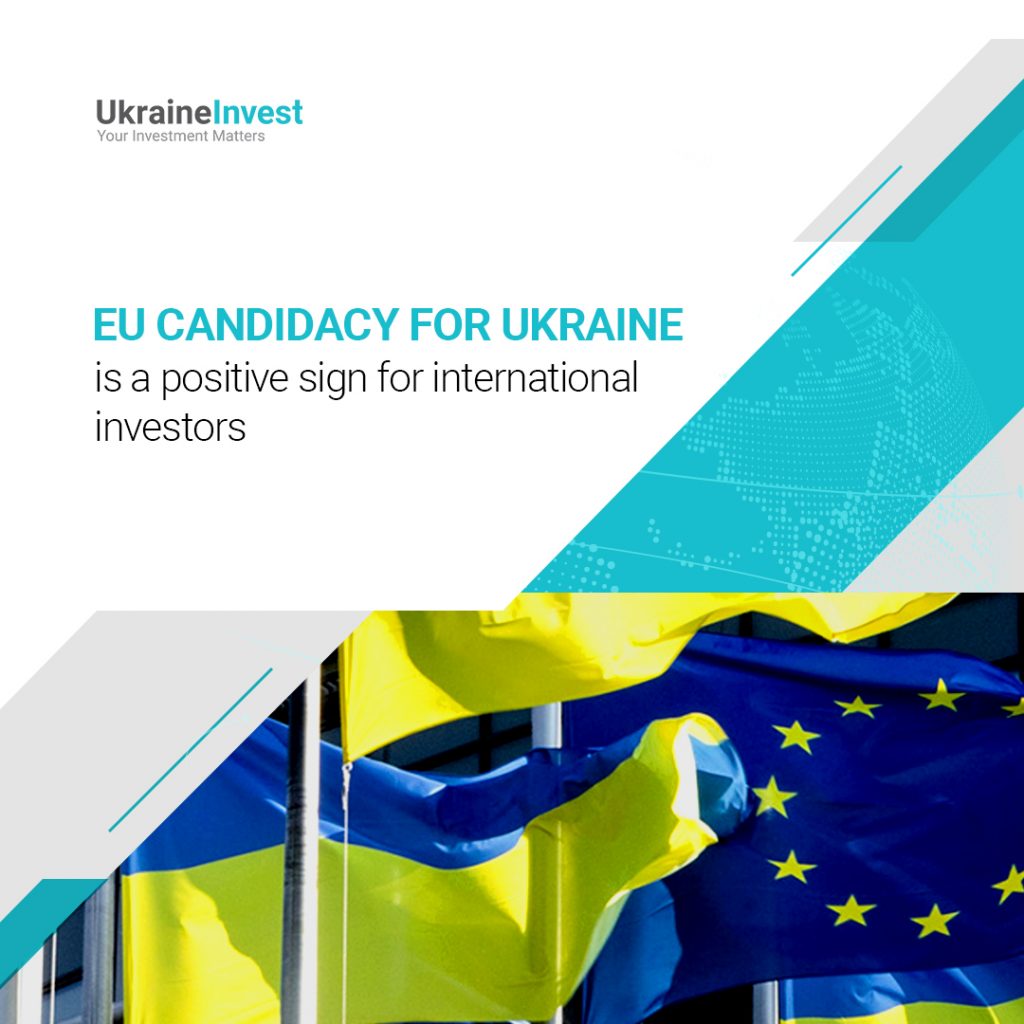
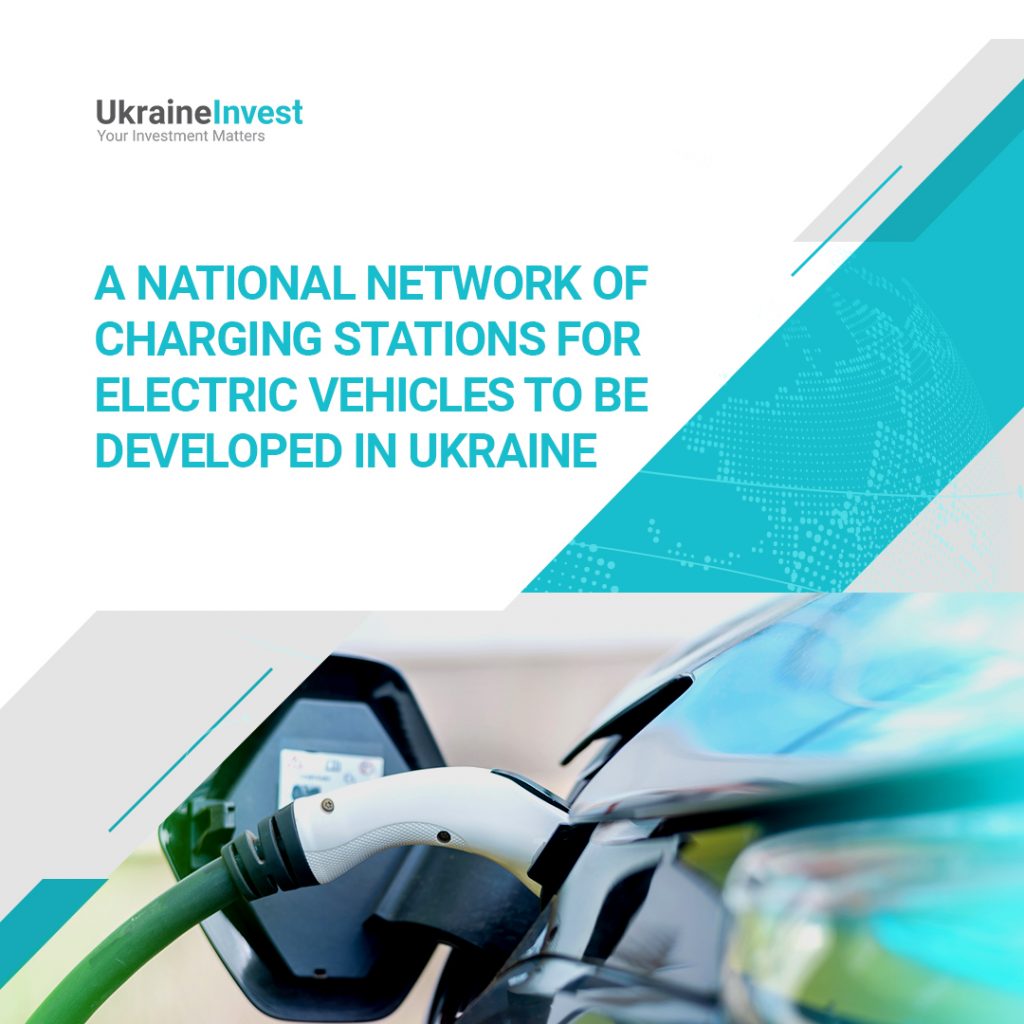
A national network of charging stations for electric vehicles will be developed in Ukraine
The national nuclear power generating company Energoatom and the state-owned Ukrgasbank have signed a memorandum on joint implementation of the project – development of a national network of charging stations for electric vehicles.
The project envisages the use of Ukrgasbank’s financial capabilities and Energoatom’s production and technical potential as the largest producer of electricity in Ukraine to create the extensive network of charging stations for electric vehicles. The project should also help Ukraine meet its international commitments on decarbonization by accelerating the achievement of carbon neutrality in Ukraine’s economy, as well as reducing the environmental pollution.
State of Ukrainian metallurgy during the war
Last year’s results were significant for Ukrainian metallurgists.
For 2021 were produced:
– 21.2 million tonnes of pig iron,
– 21.4 million tons of steel,
– 19 million tons of rolled products.
Ukraine ranked 14-th in the global ranking of steel producers. The geography of exports is global – from countries in the Middle East to North America and Asia. For many Ukrainian metallurgical companies, 2021 was the most successful in a long time. Revenues from exports of ferrous metals increased by more than 81% (up to 14 billion dollars) compared to 2020.
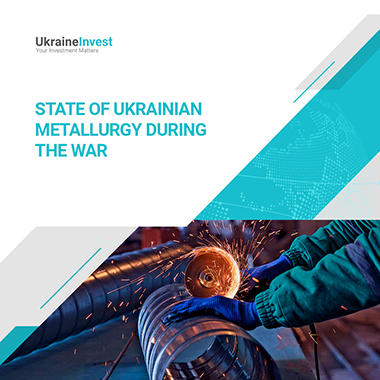
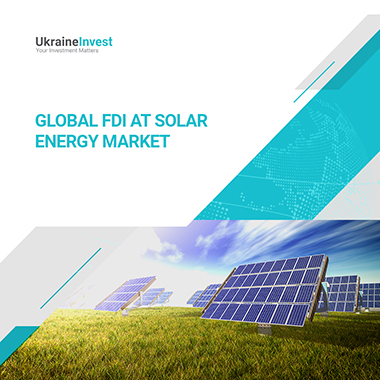
Global FDI at solar energy market
According to Energy Transition Outlook 2022, solar photovoltaic (PV) installations have seen the fastest growth among renewable technologies, with a 20-fold increase in the 2010-21 period, as a result of major cost reductions backed by technological advancements, high learning rates, policy support and innovative financing models.
After passing the milestone of 100GW of installed capacity in 2012, global solar PV installed capacity reached 843GW in 2021. Analysts expect this to be only the tip of the iceberg and solar PV to lead the renewable energy revolution moving forward and become more and more of a key pillar in any decarbonisation effort. Under the 1.5°C scenario, installed capacity is expected to reach 5200GW by 2030 and 14,000GW by 2050, according to Irena estimates.
Foreign direct investment (FDI) has been instrumental to the rapid growth and diffusion of solar energy applications. Energy companies, particularly from Europe have triggered a first wave of cross-border FDI into solar energy in the 2000s. Their peers from North America and Asia followed suit in the following decade, accelerating the globalisation of the solar energy market.
Uncertainty and recession will reduce global FDI, UNCTAD
Global foreign direct investment (FDI) flows in 2021 were $1.58 trillion, up 64 per cent from the exceptionally low level of $1 trillion in 2020. FDI flows showed significant rebound momentum with booming merger and acquisition (M&A) markets and rapid growth in international project finance because of loose financing conditions and major infrastructure stimulus packages.
However, the global environment for international business and cross-border investment changed dramatically in 2022. Russia’s war against Ukraine – on top of the lingering effects of the pandemic – is causing a triple food, fuel and finance crisis in many countries around the world. The resulting investor uncertainty could put significant downward pressure on global FDI in 2022.
Read more
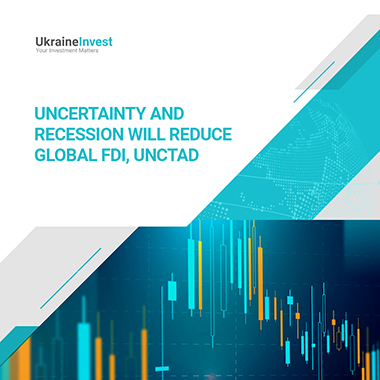
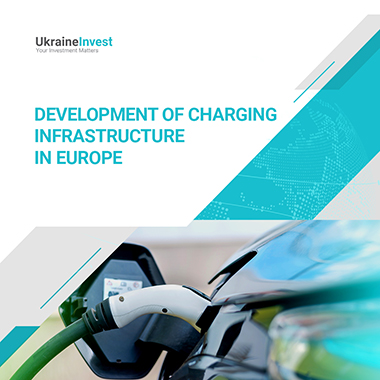
Development of charging infrastructure in Europe
In the next decade, the number of electric vehicles (EVs) on our roads will increase significantly. One of the necessary conditions for this growth is the development of the charging station market.
Today, 2/3 of the electricity needs for charging electric cars are private, both at home and in the parking lot near work. However, by 2030, the share of public charging infrastructure (public parking lots) will be close to private, which means a tenfold increase in public charging infrastructure in 10 years.
This growth is very promising for many companies operating in the charging station for electric vehicles, as well as infrastructure companies, charging manufacturers, companies that install or maintain charging points, station operators, and IT companies offer programs to pay and locate. The EU, together with the main stakeholders in the market, has developed “EV charging infrastructure masterplan”.
Capital investment is about to surge amounting to $130 trillion by 2027
McKinsey experts argue that the world will see a once-in-a-lifetime wave of capital spending on physical assets between 2022 and 2027. This surge of investment—amounting to roughly $130 trillion —will flood into projects to decarbonize and renew critical infrastructure.
Capital investment will vary by asset class, but on average, an advanced industries company in North America can expect a spending increase of 65 percent over the previous period.
An energy and materials company in Asia will see an increase of 57 percent. Across asset classes in Europe, McKinsey projects a 59 percent increase in capital spending, driven by an increase of 120 percent in European energy and materials spending. In the future, prosperity will be driven by sustainability, inclusion, and growth—an agenda that nurtures innovation while reducing environmental impact and improving people’s quality of life worldwide. Fulfilling these ambitions involves major private- and public-sector capital investments in climate transition infrastructure and in supporting economic recovery and growth. Nothing less than the commitment of top government and business leaders can accomplish a mission of this magnitude.
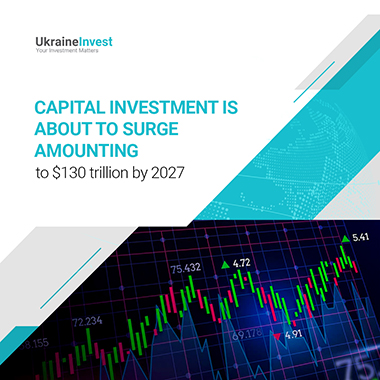
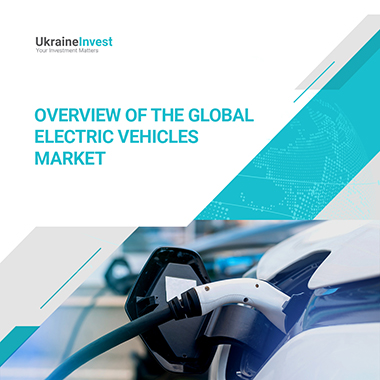
Overview of the global electric vehicles market
The electric vehicles (EV) market is developing dynamically despite the constant challenges along the way. In 2012 about 130 thousand electric cars were sold worldwide, in 2021 this figure reached 6.6 million cars. From 2019 to 2021, the share of electric cars in total car sales increased from 2.5% to almost 9% despite the pandemic, supply chain disruptions, and rising prices of critical materials.
Therefore, the EV market has increased its sales opportunities 3 times in the last 3 years. China is the EV market leader and its largest player. The country is rich in critical materials for both car and battery production, has several domestic manufacturers, developed related industries and the largest domestic market in the world. In 2021, more electric vehicles (3.4 million cars) were sold in China than in the whole world in 2020. This growth trend is expected to continue in 2022 (about 1.4 million cars in the first 4 months of 2022). This is the result of a successful combination of business and government decisions. Manufacturers have introduced successful new models, and the state subsidy system.
russia’s war against Ukraine shifts global upstream investment environment
The russian invasion of Ukraine and the subsequent imposition of sanctions by a range of governments have served to reset the global geopolitical compass, with an immediate impact on oil and gas markets and investments.
Market shifts and price dynamics create immediate costs and benefits
According to IHS Markit experts, given russia’s global significance as an energy producer and Europe as its main market, a full-scale recalibration of oil and gas demand and supply in that region is a key non-military component of the global response. In this context, the Asia Pacific region, led by China, is emerging as an important if less than complete offset to anticipated cuts in demand for russian production. All regions in the world will be affected by increases in prices and likely slower growth in economic activity and demand while rival producer states will see opportunities for increases in production and exports as Europe re-balances its energy sourcing. Near-term, high oil and gas prices represent a boon for net exporters. Major beneficiaries in which net oil exports as a percent of GDP will rise to well over 50%, assuming that Brent averages USD106/barrel in 2022 include Angola (from 35% to 55%), Iraq (from 35% to 60%), and Kuwait (from 50% to 85%).
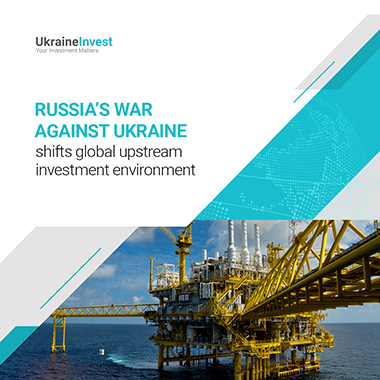
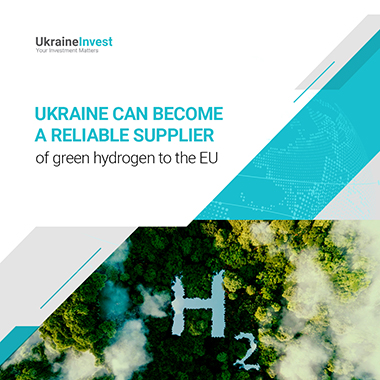
Ukraine can become a reliable supplier of green hydrogen to the EU
Hydrogen production in Ukraine can become a key tool for Ukrainian and European independence from russian energy resources, and the rapid transition to the use of “green” energy. For Ukraine, it is also a chance to become the main energy supplier of “fuel of the future” for Europe.
According to pre-war estimates from the International Renewable Energy Agency, Ukraine has the capacity to install more than 320 GW of wind and 70 GW of solar power. This does not include an assessment of the potential for installing wind and floating stations in Crimean waters, which, according to the World Bank, could add more than 250 GW. Thus, the total capacity of renewable sources can reach 415 GW installed capacity within 10 years, and with the Crimean capacity over 700 GW.
Global investments trends in renewable energy
Once dominated by fossil fuels, long-term energy investment has switched to renewables –the energy transition has redrawn the global investment map. Back in 2005, renewables accounted for just a fraction of global FDI, fossil fuels for over one fifth. Remarkably, renewables have overtaken fossil fuels as top FDI destination since 2019. As of 2021 fossil fuels made up a fraction of global FDI, renewables – about 15%. The implications of this switch are far-reaching.
The generation of electricity through the use of renewable energy sources (RES) and smart systems to store and distribute it have become the biggest magnet of global FDI. FDI into renewables peaked at $117bn in 2019, eclipsing for the first time fossil fuels, which attracted $116bn in that same year. The trend of increased renewable energy investments and decreasing fossil fuel investments held strong in the next two years as the Covid-19 crisis enhanced the case for a more sustainable economy. Although not spared by the pandemic, FDI into renewables stood at $97 bn in 2020 and $91bn in 2021, below the record high touched in 2019, but above the $67bn annual average of the 2010s. Meanwhile, foreign investments into coal, oil and gas plummeted to $48bn in 2020 only to touch a new record low at $16bn in 2021.
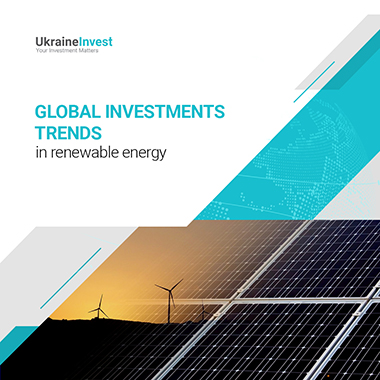
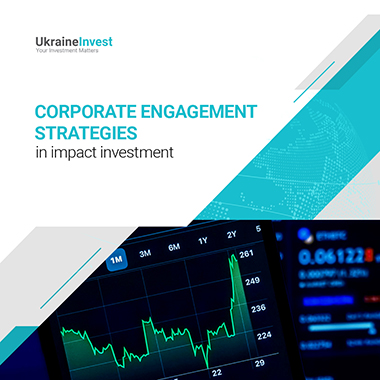
Corporate engagement strategies in impact investment
Corporate engagement and shareholder action strategies have long been a tool used by shareholders to influence the management of firms, including nudging them in the direction of more sustainable and responsible management.
Despite most S&P 500 companies publishing corporate ESG reports (from 20 percent in the 2000s to 90 percent in 2020), investors are seeking more transparency and more accountability with respect to the environmental and social footprints of companies and their impact on long-term shareholder value. This includes measuring and reporting environmental (i.e. carbon emissions, water consumption, waste generation, etc.), social (i.e. employee, product, customer related, etc.), and governance (i.e. political lobbying, anticorruption board diversity, etc.) data.
Russia’s war against Ukraine is driving copper prices to historical heights
Russia’ war against Ukraine has been a key driving force behind aluminum and nickel price movements, while high energy prices have affected most metals, especially copper. Metal prices are projected to increase 16 percent in 2022 and ease somewhat in 2023. Almost all base metals, including copper, are in deficit this year, with depleting stocks leaving little buffer for the market to weather further disruption. Unsurprisingly, the price volatility looms. The ongoing war between Russia and Ukraine, high energy costs and stricter emissions standards in China have been cited as the main reasons for the continued shortage in copper.
Copper prices reached an all-time nominal high of $10,845/mt in early March. Prices have been buoyed by low inventories and solid demand in China and advanced economies stemming from robust durable goods consumption. The world copper market has been affected by water shortages in Chile (the biggest producer and exporter) and labor disputes in Peru (2nd producer). Copper prices are projected to increase by 8 percent in 2022. Upside risks to the mid-term outlook include further supply disruptions in Russia, while a more severe slowdown in global growth poses the greatest downside risk.
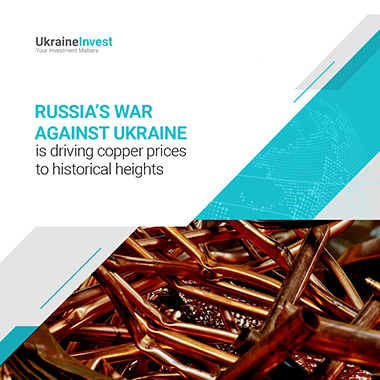
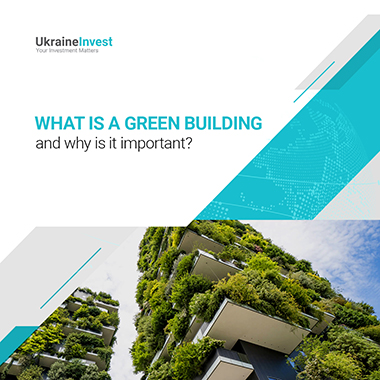
What is a green building and why is it important?
The construction sector is responsible for 37% of total energy-related carbon emissions worldwide. According to forecasts, by 2050 almost 70% of the world’s population will live in urban areas, which will require twice as much building stock. The negative impact of the construction sector is the result of the production and processing of building materials, as well as the process of construction and operation of buildings. With this in mind, green building practices are a critical part of the global fight against climate change and environmental protection. This requires urgent action to reduce the negative impact and use more sustainable and resource-efficient construction practices.
Green, social, and sustainability bonds as impact-investment instrument
While impact investing has grown rapidly in private debt and equity markets, it is also attracting growing interest from retail and institutional investors that invest mainly in public equity and bond markets.
Green, Social, and Sustainability Bonds (GSS) come a relatively new impact-investment instrument. GSS bonds are use-of-proceeds bonds that identify the types of spending that are eligible to be financed with the bond proceeds. Impact investing using GSS bonds is possible if an investor buys the bond(s) with the intent for positive impact, and the issuer measures and reports to the investor on the impact that is directly related to the funds raised with the bond.
The GSS market is growing rapidly both in volume and range of investment structures. It encompassed $1.3 trillion in outstanding value by the end of 2020.
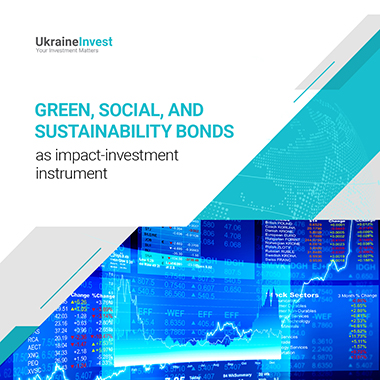
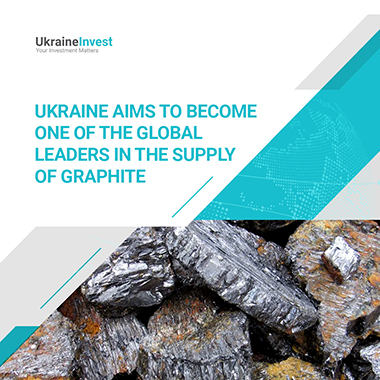
Ukraine aims to become one of the global leaders in the supply of graphite
Graphite is used as an anode material in the production of lithium-ion batteries due to its relatively low cost and energy density. Energy conservation is a major challenge in reducing CO2 emissions.
In the coming years, the demand for batteries and battery materials will increase significantly due to energy and e-mobility policies, which are driven by climate change. Some materials have been classified as critical to the European economy in terms of economic importance and the risk of supply disruptions. Natural graphite has been classified as critical in all three jurisdictions: Japan, the United States and Europe.
Ukraine’s graphite reserves are among the top five in the world. According to geological research, 6 main deposits have been identified, which contain reserves of about 18 million tons of natural graphite. In 2021, Ukraine exported more than 17,000 tons of graphite to world markets, making it the sixth largest producer in the world. Unfortunately, the war forced the suspension of the main mining enterprises. China is a leader in the supply of natural graphite, but also has faced disruptions in the supply of key minerals.
Global impact investment market and potential for growth in Ukraine
During russia’s war against Ukraine, the russian occupiers destroyed 574 health facilities worth $1,087 million and 1,067 educational facilities worth $1,437 million. Private and public impact investors can be involved in the reconstruction of these infrastructure facilities.
Impact investments are investments made by companies or organizations with the intent to contribute to measurable positive social or environmental impact, alongside a financial return. Impact investments are a particular type of sustainable and responsible investment, which have an explicit intent to generate positive social and environmental impact, in addition to considering environmental, social, and governance (ESG) risks to operational or financial performance.
Read more
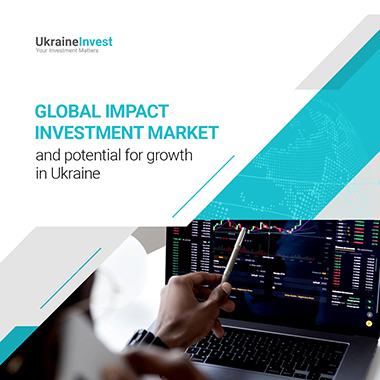
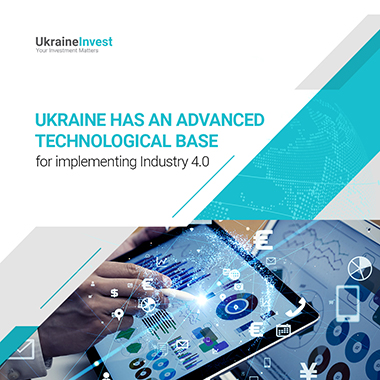
The industrial revolution has taken place over the last few decades, the fourth trend being Industry 4.0.
Industry 4.0 offers a more integrated, interconnected and holistic approach to production. It connects the physical with the digital and provides better interoperability between departments, partners, suppliers, products and people, giving business owners better control and understanding of every aspect of the business. Based on Industry 4.0, the use of digital technology in recent decades has been taken to a whole new level through usage of Internet of Things (IoT), real-time access to big data, and the introduction of cyber-physical systems.
Successfully implemented latest solutions provide high returns. According to a McKenzie study, throughout a wide range of sectors can often be observed:
– 30-50% reduction in downtime of machines,
– 10-30% increase in bandwidth,
– increase productivity by 15-30%,
– more accurate forecasting by 85%.
russia’s war against Ukraine hampers global logistics
At the beginning of 2022, global logistics saw a gradual decline in container rates and small improvements in the congestion at major ports and inland terminals. Yet russia’s war against Ukraine might have just reversed the direction of change.
Ocean Freight
All Ukrainian ports were closed shortly after the start of the invasion. As of March 7, major carriers (e.g. Ocean Network Express, Hapag-Lloyd, MSC, Maersk, and CMA CGM) suspended new bookings to and from russia and Ukraine.
The war’s immediate impact on global container shipping capacity is rather limited, given the small volumes and limited intercontinental routes in the Black Sea region. However, in the meantime worsening port congestions in Europe, soaring ocean freight insurance and skyrocketing fuel cost may lead to global container rates increase.
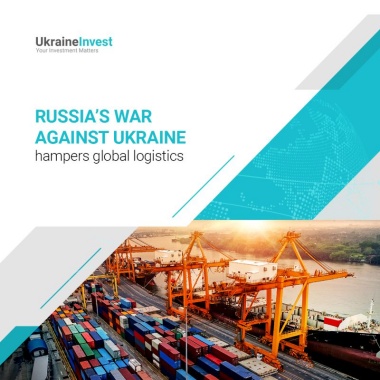
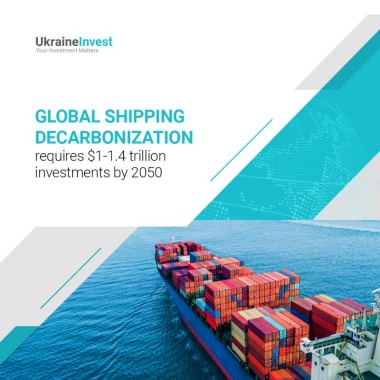
Global shipping decarbonization requires $1-1.4 trillion investments by 2050
The decarbonization of the shipping industry will require big investments in green technology and alternative fuels. With 90% of global trade moved by sea, shipping is a major contributor to climate change. The International Maritime Organization (IMO) forecasts that ‘business as usual’ could see emissions increase by up to 50% by 2050 due to the growth in shipping trade.
▪ The race to decarbonize shipping is now underway. In 2018, the IMO called for a 40% cut in greenhouse gas emissions (compared to the 2008 baseline) across the global fleet by 2030, and at least a 50% cut by 2050.
▪ Nine big multinational companies including Amazon, Ikea, Michelin, Inditex (Zara) and Unilever have pledged to only use zero-carbon ships by 2040.
Global renewables market trends
According to IHS Markit Strategic Report, electricity demand growth is expected to continue in 2022 but at a more moderated level as countries get closer to pre-pandemic levels, although uncertainties on new COVID-19 waves or lockdown restrictions remain. At the same time, the ongoing global energy supply crunch — exacerbated by russia’s war against Ukraine — means that high and volatile power prices will continue.
Supply chain bottlenecks and increases in raw material prices, amplified by the ongoing war, are also putting pressure on renewable costs. Yet renewables are expected to continue to grow, driven by decarbonization targets and secondary routes to market such as corporate power purchase agreements. Meanwhile, infrastructure challenges and grid reliability will dominate policy discussions while tensions between decarbonization and supply security lead governments and companies to consider an expanding range of clean technologies.
Read more
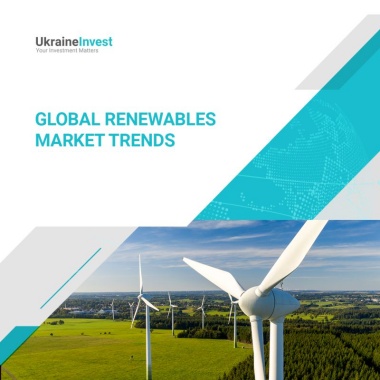
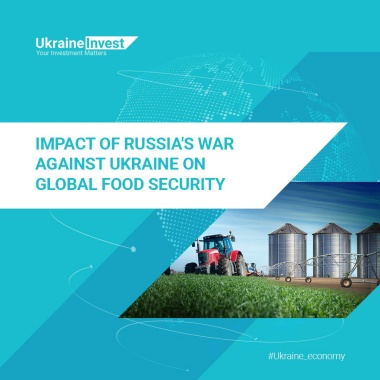
Impact of russia’s war against Ukraine on global food security
Recently, foreign and national media have focused significantly on the impact of a full-scale russian war against Ukraine on the state of global food security.
Given that, according to the United Nations, before russia’s aggression against Ukraine, 44 million people in 38 countries were on the verge of starvation. And the war may increase this figure to 52-57 million people.
Food security is the state of economy that ensures country’s food independence and provides for physical, economic and social accessibility of sufficient nutritious and safe food to the population, in accordance with the recommended diet and nutrition standards.








